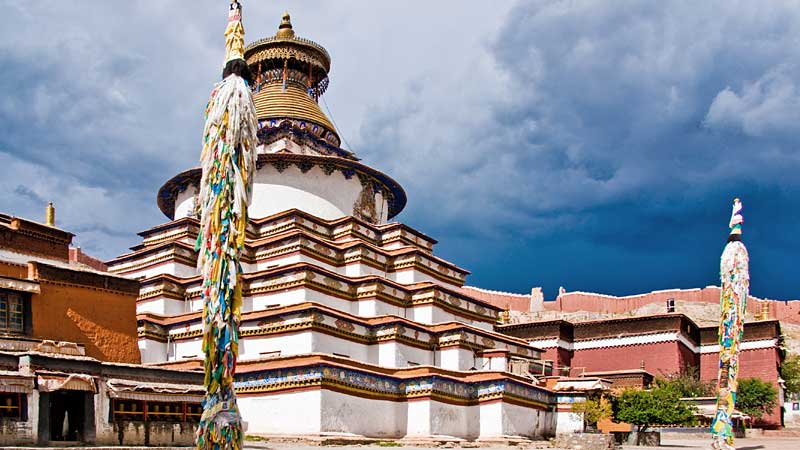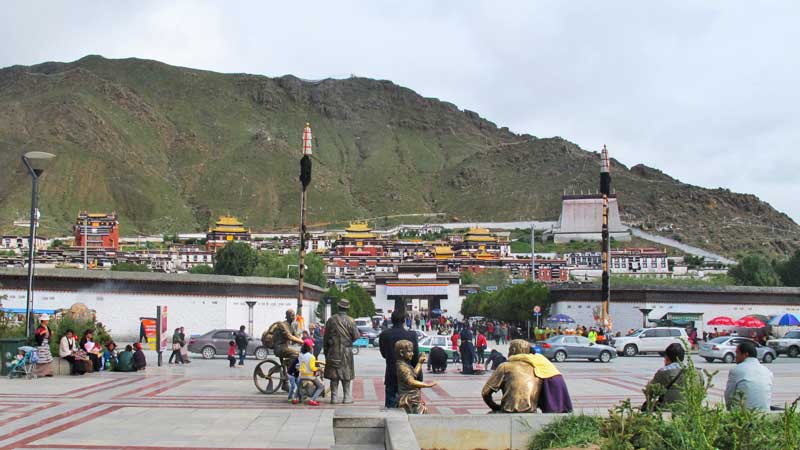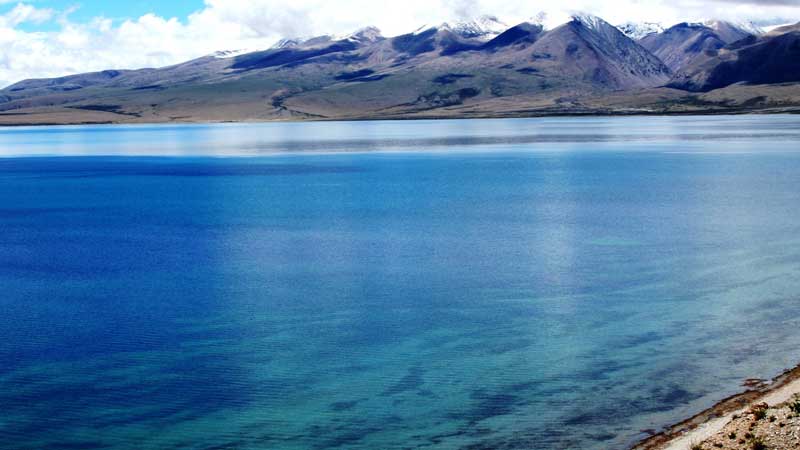
Lhasa to Mount Kailash & Guge Kingdom Trek
16 Nights / 17 Days
Lhasa - Gyantse - Shigatse - EBC - Saga - Darchen - Zanda - Kailash Trek - Darchen - Saga - Gyirong - Tingri - Lhasa
Lhasa to Mount Kailash & Guge Kingdom Trek
Experience the magic of Tibet with our 17-day trekking tour from Lhasa to Ngari, combining the spiritual beauty of Mount Kailash and Lake Manasarovar with the mystery of the ancient Guge Kingdom. This exclusive journey takes you through Tibet’s most sacred and scenic landscapes, blending spirituality, history, and adventure.
Highlights of the Trek
Your journey begins in Lhasa, where you’ll explore famous landmarks like the Potala Palace and Jokhang Monastery, soaking in the city’s deep cultural and religious charm. From there, travel westward through stunning mountain scenery, visiting Everest Base Camp and Rongbuk Monastery, the highest monastery in the world.
As you reach Ngari prefecture, you’ll trek around the sacred Mount Kailash, one of the holiest peaks in Asia, and visit the peaceful Lake Manasarovar. This region offers breathtaking views, serene landscapes, and a strong sense of spirituality.
Discover the Ancient Guge Kingdom
Continue your adventure to the Guge Kingdom, a once-powerful center of Tibetan Buddhism founded in 868 AD. The kingdom played a major role in reviving Buddhism in Tibet after its decline in the 9th century. Explore the remains of Tsaparang and Toling Monastery, where ancient murals, caves, and temple ruins still tell stories of the past.
Flexible Itinerary Options
The tour begins in Lhasa, where you’ll spend a few days acclimatizing and sightseeing before heading west through key towns like Gyantse, Shigatse, and Sakya. The route can be customized to suit your schedule, whether you prefer to travel via the northern route (Shiquanhe) or the southern route (Saga–Paryang–Manasarovar).
Why Choose This Trek
- Combine spiritual exploration with adventure travel
- Visit Everest Base Camp, Mount Kailash, and Lake Manasarovar
- Discover the lost Guge Kingdom and its ancient treasures
- Enjoy a complete journey through Central and Western Tibet
This Lhasa to Mount Kailash & Guge Kingdom Trek is the ultimate way to experience Tibet’s sacred beauty, ancient history, and unforgettable landscapes — a once-in-a-lifetime journey for true explorers.
FAQ About Mt. Kailash & Guge Kingdom Trek
Warm clothing (layers for high-altitude cold)
Comfortable trekking shoes
Sunglasses, sunscreen, and a hat
Personal medications and first-aid kit
Water bottle and snacks for treks
Tour Itinerary
Day 1 Arrival in Lhasa – Welcome to the Roof of the World
Welcome to Lhasa (3,650m) — the heart of Tibet! Upon your arrival by flight or train, our friendly Tibetan guide will greet you at the station or airport with a warm smile and a Hada, a traditional white ceremonial scarf symbolizing good luck and blessings.
You’ll then be driven to your hotel in downtown Lhasa, passing beautiful views of the Yarlung Tsangpo River (Brahmaputra) and the Lhasa River along the way.
After check-in, take it easy and give your body time to adjust to the high altitude. Rest and drink plenty of water — this is an important day for acclimatization.
Later in the afternoon or evening, your guide will meet you to share travel tips, introduce your group members, and present a small Tibetan welcome gift.
If you need any assistance or have special requests, you can visit our service center located at Lhasa Gang Gyan Hotel.
Overnight stay in Lhasa.
Day 2 Lhasa Sightseeing – Drepung Monastery & Sera Monastery (B, D)
Get ready for a full day dedicated to exploring Tibet’s most important monasteries and experiencing the heart of Tibetan Buddhism.
Start your day with a visit to Drepung Monastery, once the largest monastery in Tibet and home to over 10,000 monks. As you walk through its grand halls and courtyards, your guide will share fascinating stories about Tibetan Buddhist philosophy and the lives of its great teachers.
You’ll also visit the Loseling College (or a similar monastery college) to see how monks study Buddhist scriptures and live their daily lives. A short visit to their monastic quarters offers a glimpse into their simple yet spiritual lifestyle.
After lunch, continue to Sera Monastery, one of the “Great Three” Gelug monasteries of Tibet. Here, you’ll witness the famous monks’ debate session (held between 3:00 PM and 5:00 PM, Monday–Saturday). This lively debate is a unique way monks test and deepen their understanding of Buddhist teachings. Your guide will explain the meaning behind their gestures, claps, and discussions.
Wrap up your first full day in Lhasa with a special welcome dinner alongside your travel companions — the perfect opportunity to share experiences and enjoy authentic Tibetan cuisine.
Overnight stay in Lhasa.
Day 3 Lhasa City Tour – Potala Palace, Jokhang Temple & Barkhor Street (B)
Today, you’ll explore the spiritual heart of Lhasa, visiting two UNESCO World Heritage Sites — the Potala Palace and Jokhang Temple — along with the bustling Barkhor Street. These landmarks reveal the deep faith and vibrant culture that define Tibetan life.
After breakfast, begin your day at the Potala Palace, the most iconic landmark of Tibet. Standing high above the city, it offers breathtaking panoramic views of Old Lhasa. Inside, you’ll explore ancient chapels and sacred halls filled with history — from the gilded stupas of the Dalai Lamas to the meditation cave of Tibet’s 33rd great king.
Next, visit Longwangtan Park, located at the base of the palace. This peaceful spot offers a stunning view of the Potala Palace and a chance to observe local Tibetans engaging in daily prayer and traditional activities.
Continue to the Jokhang Temple, the spiritual center of Tibet and one of the most revered pilgrimage sites. Inside, you’ll see the sacred statue of Buddha Sakyamuni at age twelve, a priceless relic worshipped by countless devotees. Outside the temple, pilgrims can be seen prostrating and praying, creating a powerful and moving atmosphere.
Afterward, stroll around Barkhor Street, an ancient market encircling the temple. Join locals in a kora (spiritual circumambulation) or browse shops filled with Tibetan handicrafts, prayer wheels, and souvenirs.
Before returning to your hotel, visit a traditional Tibetan tea house, where you can sip sweet Tibetan tea and experience local life up close. It’s the perfect way to unwind and connect with the everyday rhythm of Lhasa.
Overnight stay in Lhasa.
Day 4 Lhasa to Shigatse via Gyantse – Scenic Drive Through Lakes & Glaciers (B, L)
Today, you’ll enjoy one of Tibet’s most beautiful road journeys — a scenic 360 km drive from Lhasa to Shigatse, passing through sparkling lakes, snow-capped peaks, and traditional Tibetan villages.
Start your day early and drive over the Gampala Pass (4,790m), where you’ll be rewarded with breathtaking views of Yamdrok Lake (4,400m) — one of Tibet’s three holiest lakes. The turquoise waters are surrounded by snowy mountains, with the majestic Mount Nyenchen Khangsar (7,191m) standing tall in the distance.
Continue along the lake’s edge, stopping at scenic viewpoints for photos. At the far end of the lake, you’ll visit a local Tibetan village, where you can share lunch with a family and learn about their traditional lifestyle.
After lunch, head towards the impressive Korola Glacier, Tibet’s largest glacier. The glacier’s ice tongue extends dramatically down the hillside — a spectacular sight that showcases the raw beauty of nature.
You’ll then stop at the Simila Mountain Pass, where travelers often hang colorful prayer flags to bring peace and good fortune to their families.
Arriving in Gyantse, spend some time capturing photos of this historic town and its charming fortress-like skyline before continuing your drive to Shigatse, Tibet’s second-largest city.
Along the way, you’ll pass through endless barley fields and traditional farmlands, painted green in summer and golden in autumn.
After reaching Shigatse, check into your hotel and rest well to prepare for tomorrow’s adventure to Mount Everest.
Overnight stay in Shigatse.
Day 5 Shigatse to Everest Base Camp – Journey to the World’s Highest Peak (B)
Today’s journey is one of the most thrilling parts of your Tibet adventure — a scenic drive from Shigatse (3,850m) to Everest Base Camp (5,000m), where you’ll witness the breathtaking beauty of the Himalayan range and the mighty Mount Everest itself.
After breakfast, begin your drive toward Mount Everest National Nature Reserve. The first stop is Gyatsola Pass (5,280m), where you’ll catch your first glimpse of Mount Everest, rising like a lotus flower among the surrounding peaks.
Continue your journey to Gawula Pass (5,198m) — one of the best viewpoints in Tibet. From here, enjoy a panoramic view of the Himalayas, with five of the world’s highest peaks lined up before you — including Mount Everest, Lhotse, Makalu, Cho Oyu, and Shishapangma. This is your second view of Everest, a sight you’ll never forget.
Descend along the scenic zigzag road that winds through the mountain valleys toward Everest Base Camp (5,000m). As you get closer, Everest gradually reveals itself in all its grandeur — your third view of the world’s highest mountain.
Upon arrival, the stunning white pyramid peak of Mount Everest dominates the skyline. As the sun sets, its golden rays paint the north face of Everest in warm orange tones — your fourth and most magical view.
When night falls, step outside to see the starry Milky Way shining brightly above Everest’s snow-covered peak — your fifth and final view of the day, a truly unforgettable experience.
Overnight stay at Everest Base Camp.
Day 6 Everest Base Camp to Saga via Pelku Tso Lake – Entering Western Tibet (B)
Today, your adventure continues westward along the Ngari Plateau, traveling through vast grasslands, shimmering lakes, and towering snow-capped peaks. This scenic route marks your journey deeper into the mystical land of Mount Kailash and Lake Manasarovar.
Wake up early to catch a breathtaking sight — the first rays of sunlight painting Mount Everest in shades of pink and gold. It’s one of the most magical views of the Himalayas.
After breakfast, visit Rongbuk Monastery (5,154m), the highest monastery in the world. Nestled beneath Mount Everest, this serene monastery offers a perfect blend of natural beauty and spiritual tranquility.
Continue your drive toward Ngari, the most remote and spiritually rich region of Tibet. On the way, you’ll pass by the mighty Mount Shishapangma (8,027m) — one of the world’s 14 peaks above 8,000 meters. From the road, enjoy stunning views of its three main summits reflected in the shimmering waters of Pelku Tso Lake.
As you travel across the highland grasslands near the lake, you’ll encounter sweeping Himalayan landscapes and glimpses of nomadic Tibetan life. Eventually, you’ll reach Saga County, known as the gateway to Mount Kailash.
Saga serves as an important rest stop before heading further west. Here, you can stock up on any supplies needed for your upcoming Kailash trekking adventure.
Overnight stay in Saga.
Day 7 Saga to Darchen – Journey to the Sacred Mount Kailash (B)
Today, you’ll travel from Saga to Darchen, the small town at the base of Mount Kailash. This scenic route takes you through the Saga Valley, surrounded by the Himalayan and Gangdise mountain ranges, offering incredible views of snow-capped peaks, wide open grasslands, and sparkling highland lakes.
After breakfast, begin your drive through the beautiful Saga Valley, where you’ll pass by herds of yaks and sheep grazing peacefully under the shadow of towering mountains. Along the way, you’ll see the picturesque Gongzhucuo Lake, its green waters reflecting the surrounding peaks — a perfect spot for a photo stop.
Continue your journey westward, crossing Mayum La Pass (5,211m). This marks your official entry into the Ngari Region, one of Tibet’s most remote and spiritually significant areas. As you descend from the pass, the landscape opens up dramatically — and soon, you’ll catch your first mesmerizing sight of the holy Lake Manasarovar, with the sacred Mount Kailash rising majestically in the distance.
The view of the lake and mountain together is truly awe-inspiring — a moment that fills many travelers with peace and reverence.
Driving along the shores of Lake Manasarovar, you’ll arrive in Darchen (4,575m), a small town nestled at the foot of Mount Kailash. This will be your base for the upcoming Kailash Kora (pilgrimage trek).
Check into your hotel and rest well — tomorrow, you begin one of the most sacred treks in the world.
Overnight stay in Darchen.
Day 8 Darchen to Zanda – Explore the Ancient Guge Kingdom (B)
Today’s journey takes you deep into western Tibet, where ancient history and natural beauty come together. You’ll travel from Darchen to Zanda, exploring the Ruins of the Guge Kingdom, the Toling Monastery, and the dramatic landscapes of the Ngari Plateau.
After breakfast, set out on a scenic drive across the Ngari Plateau toward Zanda County. The landscape here is truly unique — vast eroded canyons, soil forests, and high-altitude wilderness. Keep an eye out for wildlife, including Tibetan wild asses and gazelles, roaming freely across the open plains.
Upon arrival in Zanda, your first stop is the Toling Monastery, one of Tibet’s oldest and most artistically rich monasteries. Inside, you’ll find vivid murals depicting Buddhist stories, celestial beings, and detailed patterns — often compared to the Dunhuang Mogao Caves in artistic quality. The monastery’s blend of Indian, Nepali, and Tibetan architectural styles, surrounded by 83 stupas, reflects its historical and cultural importance.
Next, visit the Ruins of the Guge Kingdom, an ancient civilization that flourished for over 700 years before mysteriously disappearing around the 17th century. The site features fortress-like structures, ancient temples, gold and silver Buddha statues, and the famous “Guge Silver Eyes” murals. As you wander through the remains, you’ll feel the echoes of Tibet’s glorious past and the deep spiritual influence of Buddhism in this lost kingdom.
After exploring, return to your guesthouse in Zanda for a restful evening.
Overnight stay in Zanda.
Day 9 Zanda to Donggar & Piyang Caves – Return to Darchen (B)
Today, you’ll explore one of Tibet’s most remarkable archaeological treasures — the Donggar and Piyang Caves, the largest Buddhist cave complex in the world. These ancient caves offer a rare glimpse into Tibet’s early civilization, art, and spiritual history.
After breakfast, set out to visit the Donggar and Piyang Caves, located amid the dramatic landscapes of western Tibet. These caves feature a vast collection of ancient monasteries, grottoes, fortresses, and pagodas, many of which are carved directly into the cliffs.
Inside, you’ll discover beautifully preserved murals and carvings, depicting scenes from Buddhist scriptures, celestial beings, and everyday life in ancient Tibet. The artwork reflects a blend of early Tibetan, Indian, and Central Asian influences, offering insight into the region’s spiritual and artistic evolution.
Wandering through this remote archaeological site feels like stepping back in time — each cave tells a story of devotion, creativity, and resilience across centuries.
After your exploration, drive back to Darchen, the starting point of your Mount Kailash trek. Spend the evening preparing for your upcoming Kora (pilgrimage circuit) around the sacred mountain.
Note: If you plan to hire a porter for your Mount Kailash trek, inform your guide today so arrangements can be made in advance. (Porter fees are not included in the tour cost.)
Overnight stay in Darchen.
Day 10 Darchen to Dirapuk Monastery – Trek Day 1 (13 km) (B)
Today marks the first day of your Mount Kailash trek, starting from Darchen and heading toward Dirapuk Monastery. Enjoy spectacular views of Mount Kailash’s southern, southwestern, and western slopes as you begin this sacred pilgrimage.
After breakfast, take an eco-bus from Darchen to Sarshung Valley, where your trek begins. Today’s route is 13 kilometers and relatively gentle, following the valley floor at the base of Mount Kailash. Along the way, take in the serene landscapes, rolling hills, and the majestic southern and western faces of the sacred mountain.
Reach Dirapuk Monastery (Zhire Temple), your home for the night. Check into the guesthouse and take some time to rest.
Afterward, explore the monastery and its surroundings with your guide. Admire the ancient stupas, the imposing cliffs of the western slope, and the peaceful spiritual atmosphere of this sacred site.
Weather permitting, witness a breathtaking sunset over Mount Kailash. Watch as the sun casts a golden glow over the western cliffs, creating a magical and unforgettable scene.
Overnight stay in a local guesthouse at Dirapuk Monastery.
Day 11 Dirapuk Monastery to Zutulpuk Monastery – Trek Day 2 (24 km)
Today is the most challenging day of your Mount Kailash trek. You’ll cross the highest point of the pilgrimage at Dolma La Pass (5,630m), walking alongside devout pilgrims performing prostrations and taking in the awe-inspiring landscapes of the sacred mountain.
Start early with a 4 km trek from Dirapuk Monastery to reach an altitude of 5,430m. This rapid climb offers a breathtaking sunrise view over Mount Kailash’s northwest slope.
Continue for 2 more kilometers to Dolma La Pass, the highest point of the kora. Here, thousands of colorful prayer flags flutter in the wind, blessing travelers and the surrounding land.
After crossing Dolma La Pass, descend to the emerald-green Lake of Compassion (Guri Kund). According to legend, a dip in this sacred lake purifies a lifetime of sins. Nearby, observe the glaciers along the northwest slope of Mount Kailash, creating a stunning alpine backdrop.
From the lake, continue a gradual descent into the valley beneath the southeast foot of Mount Kailash, arriving at Zutulpuk Monastery (Dzutripuk Monastery). Enjoy the peaceful grasslands, spot wildlife, and soak in the spiritual serenity of this sacred location.
Overnight stay in a local guesthouse at Zutulpuk Monastery.
Day 12 Zutulpuk Monastery to Darchen – Complete the Kailash Kora & Visit Lake Manasarovar (Trek Day 3: 12 km)
Today, you’ll complete the sacred Mount Kailash kora and refresh your mind and body at the holy Lake Manasarovar.
Begin your trek from Zutulpuk Monastery back to Darchen, retracing the final 12 km of the Mount Kailash kora. This last stretch allows you to reflect on the spiritual journey you’ve completed while enjoying views of the surrounding mountains and grasslands.
After finishing the kora, take a short 30 km drive to the sacred Lake Manasarovar, one of the holiest lakes in Tibet. At the lakeside, you can:
- Meditate or simply enjoy the tranquil surroundings
- Touch or wash in the holy waters, which hold deep spiritual significance for Hindus and Buddhists
- Relax in nearby hot springs (optional) — ideal for soothing tired feet after the trek
After spending time at the lake, return to Darchen for rest and reflection.
Overnight stay in Darchen.
Day 13 Darchen to Saga – Return from the Ngari Plateau (B)
After breakfast, begin your journey back from Darchen to Saga, leaving the sacred landscapes of the Ngari Plateau behind.
Enjoy the breathtaking scenery of the Himalayas and the Gangdise Mountains along the way. Stop at grassy pastures and highland lakes to admire the region’s unique wildlife and take memorable photos of the vast, open landscapes.
Continue your drive westward and arrive in Saga, an important stopover on the way back to central Tibet. Take the evening to rest and prepare for the journey ahead.
Overnight stay in Saga.
Day 14 Saga to Gyirong – Explore the Himalayan Edge (B, D)
Today, you’ll travel from Saga to Gyirong, a hidden gem on the Sino-Nepal border, enjoying the dramatic shift in landscapes from snow-capped peaks to lush forests and deep canyons.
Start your journey early and descend from the high-altitude Ngari Plateau. The scenery gradually changes — wastelands and mountains give way to dense forests, rivers, and canyon landscapes, offering a refreshing contrast to the dry plateau.
Arrive in Gyirong Town and explore Gyirong Valley, once described by British explorer Howard-Bury as the “most beautiful valley in the world” in Mount Everest: The Reconnaissance. Visit Sherpa villages, enjoy the serenity of lush forests, and admire snow-capped peaks rising above the greenery. The mild and humid air here is a welcome change from the thin, dry oxygen of western Tibet.
Conclude the day with a farewell dinner with your group, sharing memories of your incredible journey across Tibet. This is a special moment to celebrate your adventure and bid farewell to those departing from Gyirong to Kathmandu.
Overnight stay in Gyirong.
Day 15 Gyirong to Tingri – Return to the Tibetan Highlands (B)
Today, you’ll leave the forested Himalayan edges and return to the high-altitude Tibetan plateau.
Take the morning to rest and relax after your long journey.
Notice: If you plan to continue directly to Kathmandu after your Mount Kailash tour, you can depart from Gyirong this morning.
After lunch, begin the scenic drive to Tingri County in Shigatse. As you ascend back to the plateau, enjoy breathtaking views of the Himalayas and the vast highland landscapes.
Arrive in Tingri in the afternoon, check into your hotel, and take the evening to rest and acclimatize for the next day’s journey.
Overnight stay in Tingri.
Day 16 Tingri to Lhasa – Visit Tashilhunpo Monastery (B)
Today, your journey takes you from Tingri back to Lhasa, with a special stop at Shigatse’s largest monastery, the Tashilhunpo Monastery.
Begin with a visit to the spiritual home of the Panchen Lama. This grand monastery spreads across the hillside and is a major center of Tibetan Buddhism. Highlights include:
- Magnificent halls and courtyards
- The world’s largest statue of Maitreya Buddha
- Insight into Tibetan spiritual life and monastic traditions
After exploring the monastery, drive back to Lhasa along the scenic Yarlung Tsangpo River, often called the mother river of Tibet, enjoying the majestic landscapes and riverside scenery along the way.
Overnight stay in Lhasa.
Day 17 Departure from Lhasa (B)
Before you leave, please confirm your flight or train details with your guide. Our team will escort you to the airport or railway station for your onward journey.
We thank you for choosing our Mount Kailash & Guge Kingdom Trek and warmly welcome you to return to Tibet for more adventures in the future.
Tour Ends Here.
Make Your Trip Now
Get More Packages
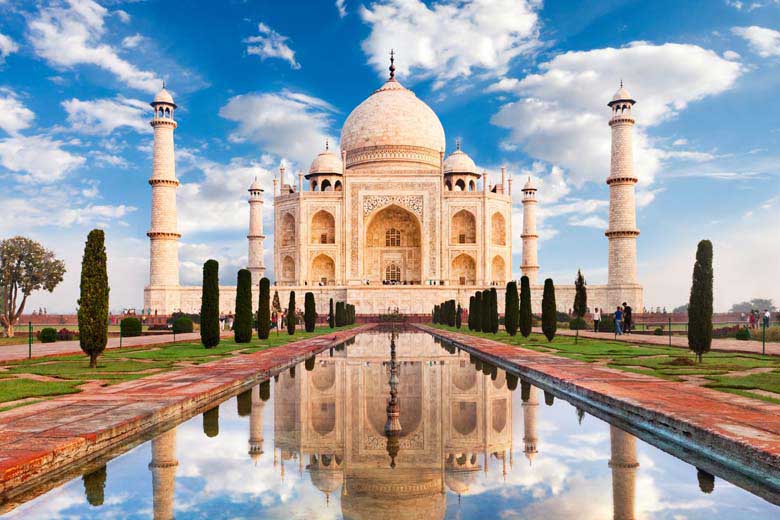
Golden Triangle Vacation Tour
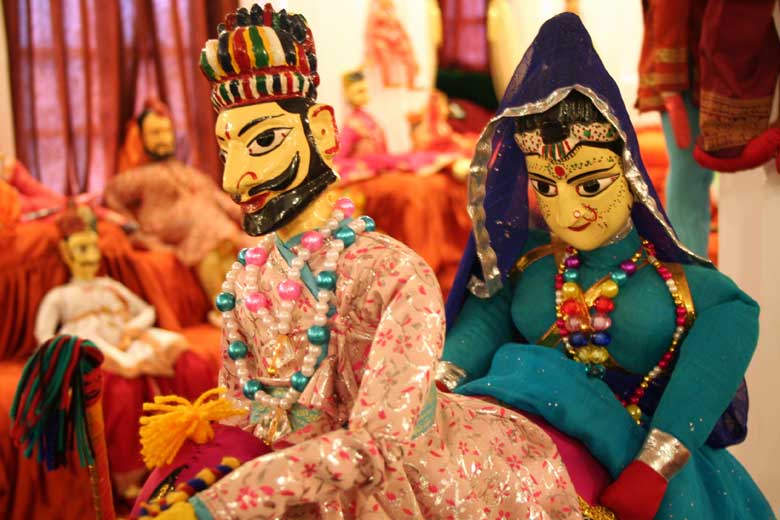
Rajasthan colorful Tour
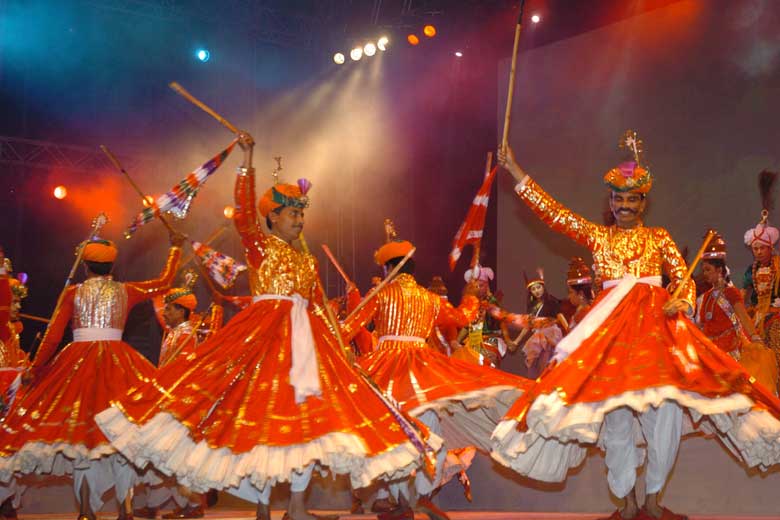
Rajasthan Cultural Tour
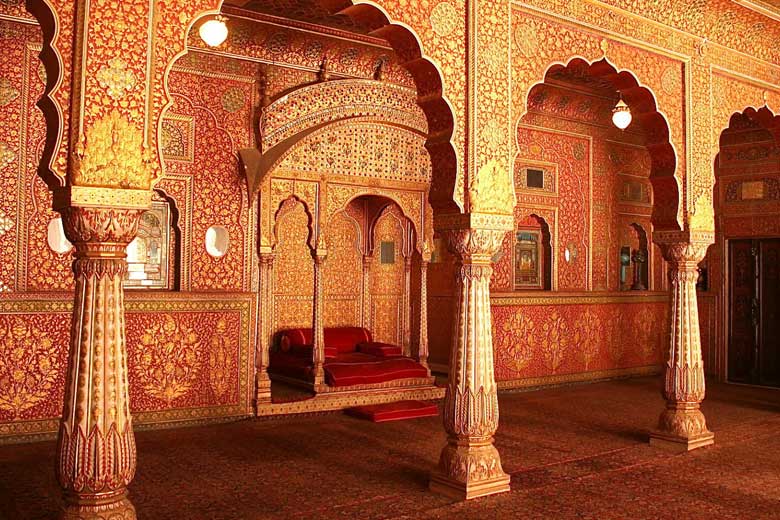
Rajasthan Fort & Palace Tour
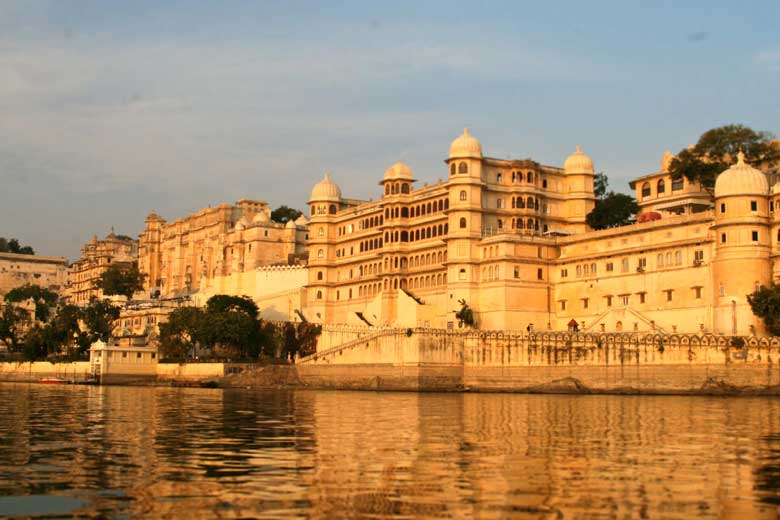
Rajasthan Heritage Tour
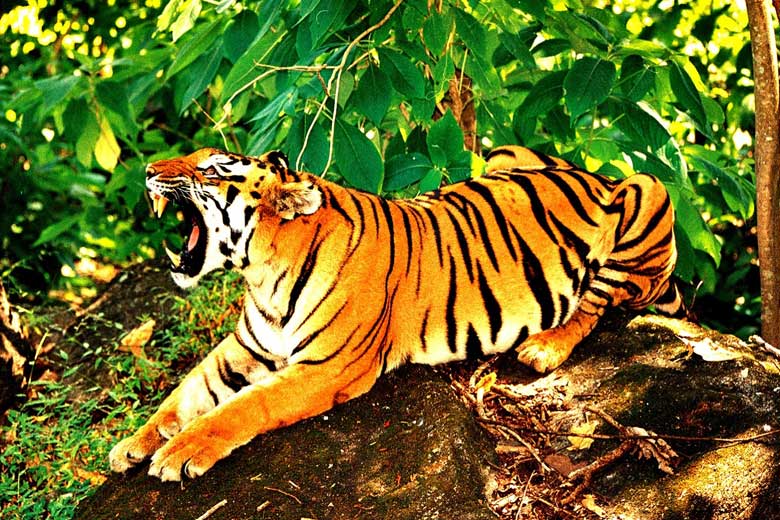
Rajasthan Wildlife Tour
MOST POPULAR PACKAGES

6 Nights / 7 Days
Golden Triangle Vacation Tour
India’s golden triangle is a tourist circuit which includes: Delhi, Agra (including the Taj Mahal), and Jaipur. These trips usually 7 days and do the trip as a circuit starting and ending in Delhi.
View Package
16 Nights / 17 Days
Rajasthan colorful Tour
Coloruful Rajasthan Tour is one of the most popular circuit of India. This tour package accommodates you to endure Rajasthan in all its different colors.
View Package
10 Nights / 11 Days
Rajasthan Cultural Tour
The Rajasthan state represents an unusual diversity in all its forms - people, culture, customs, costumes, cuisine, dialects and music and haveli's.
View Package
12 Nights / 13 Days
Rajasthan Fort & Palace Tour
Rajasthan is famous all over the world for its stunning forts and palaces that have been gloriously standing since decades in this princely state.
View Package
11 Nights / 12 Days
Rajasthan Heritage Tour
Rajasthan known as the "land of kings"provides some marvelous marks from the history in the form of its forts, palaces, mansions and haveli's.
View Package
06 Nights / 07 Days
Rajasthan Wildlife Tour
The name Rajasthan has a habit of invoking the images of sun-bathed sand dunes of the Thar Desert, the rustic turban and mustache of Rajasthani men and women’s ghagra.
View Package
 Gujarat Toursim
Gujarat Toursim
 IATO -
Indian Association of Tour Operators
IATO -
Indian Association of Tour Operators
 +91-9811175768
+91-9811175768